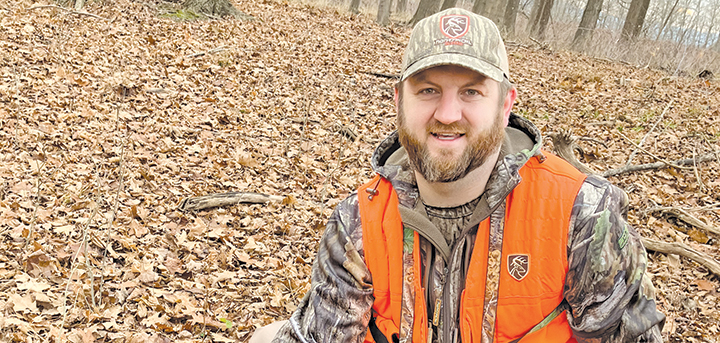Outdoor Chenango: Shifting Information Sources And New Technology
Published:
February 5th, 2025
By:
Eric Davis

Last year, I changed jobs and I find myself with a lot of “windshield time” as I put roughly 2,000 miles on my work truck each month. In the fall, I watched a Youtube video about reloading and noticed that it was a video of guys doing a podcast. So I got my phone out and opened the Podcast app. I spent a few minutes checking it out and started searching for reloading podcasts, specifically the Hornady podcast. Once I ran the search, I realized there were a lot of episodes. So I scrolled through them and downloaded a handful to my phone. This was because I was driving to Syracuse for almost two weeks straight and knew I would lose phone coverage for parts of my drive. Streaming the podcast would result it cutting out when I lost service.
The next day, when I got in my truck in the morning I plugged my phone into the truck sound system via a USB and opened the Podcast app. The podcast was a little over an hour long and it ended with roughly 15 minutes left in my drive. Not listening to the same radio morning shows and commercials, and having to change stations as I got closer to Syracuse made the drive more enjoyable. Plus I got to listen to something that I actually wanted to the entire way.
Yesterday, I worked in Syracuse and listened to podcasts on both of my way there and back. The interview with a shooting sports television producer covered a good variety of information. One aspect that was brought up was the shift in the “consumption” of the video materials that they put out. In the 90s and early 2000s, television shows were the juggernauts of disseminating their shows to the public.
I was one of those consumers, as I got into hunting in the mid-2000s. Then as the internet took off and the Youtube platform started. Now you could watch videos on your computer when you wanted to or had the time, instead of having to wait for a certain day and time for a television show. As social media platforms began to get into videos, the consumer base started to look for the shorter and shorter videos that those platforms use. Now 2-minute videos can get more views in a few hours than some of their company’s 15-minute Youtube videos on the same topic.
Hearing this discussion made me think about the change in how people get their hunting, fishing, and shooting information. With my volunteer work with the National Wild Turkey Federation I have learned about the history of the wild turkey in the US. In the 1980s as turkeys were rebounding and getting released across the country, turkey seasons began being a thing. Many hunters didn’t know what they were doing when it came to calling, so they would often attend calling contests to hear the calls. Then cassette tapes became available so hunters could listen to instructions and what the calls should sound like. Next VHS tapes so they could watch and listen. Now, in a matter of seconds, you can find videos on your phone of how to use a turkey call.
There are examples of this shift in basically every outdoor recreation branch. As I have written a few times, I am getting into reloading rifle ammunition. The change in information dispersion is applicable in this realm as well. From paper copy reloading manuals with instructions on the different tools and steps to videos on DVDs to Youtube to an app. I recently downloaded the Hornady Reloading app on my phone. It keeps my bench slightly cleaner and I can even make my own notes for the different calibers I reload right in the app that will be there the next time I go to load for easy reference and repeatability. The app also has sections about bullet selection, tips and techniques for the different steps of the reloading process.
So if you get a chance, stop and think about how much things have changed in getting the information out to the end users from the industry. It has been a pretty wild evolution.
Author: Eric Davis - More From This Author
Comments










